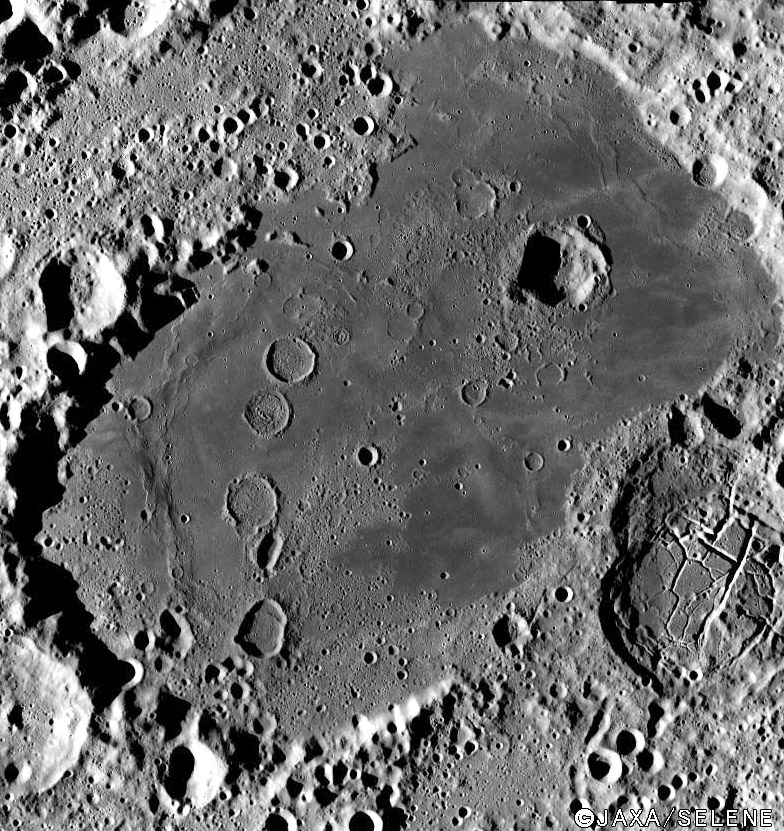April 19, 2018
The Famous Moscow Sea
Originally published December 10, 2008

Kaguya Terrain Camera image from Kaguya/Selene Photo Gallery
Last month Japanese scientists reported ages as young as 2.5 billion years for mare patches on the farside. Now the Kaguya/Selene Photo Gallery has released a higher resolution version of one of the impressive images used for the investigation. This is the central area of the Moscoviense Basin with the same named mare filling the floor of what appears to be two overlapping large craters. But in fact, the area at upper right is part of the moat between two basin rings. A mountainous inner ring is well shown at bottom left, but the opposite side of the rim is missing, although a small mare ridge hints at its former location. The darker mare areas are clearly much younger than the heavily cratered regions especially near the southern end of the basin floor. Note that the very heavily cratered area at upper left is the continuation of the moat area flooded by lava at upper right - that area may be an even earlier lava. The mare thickness in Moscoviense is estimated to be only 1.5 km thick, consistent with all the craters that have been breached and partly flooded, but not totally covered. Notice the small possible concentric crater (with a central peak?) at the northern end of the four craters along the western floor. Finally, this vertical view reveals that the floor-fractured crater Kamarov at lower right almost obliterates an older, slightly smaller crater.
Chuck Wood
Yesterday's LPOD: In the Moat
Tomorrow's LPOD: 34 Years Ago Today
COMMENTS?
Register, Log in, and join in the comments.



